Smoking particles enhance endothelin A and endothelin B receptor-mediated contractions by enhancing translation in rat bronchi
- PMID: 16539723
- PMCID: PMC1448182
- DOI: 10.1186/1471-2466-6-6
Smoking particles enhance endothelin A and endothelin B receptor-mediated contractions by enhancing translation in rat bronchi
Abstract
Background: Smoking is known to cause chronic inflammatory changes in the bronchi and to contribute to airway hyper-reactivity, such as in bronchial asthma. To study the effect of smoking on the endothelin system in rat airways, bronchial segments were exposed to DMSO-soluble smoking particles (DSP) from cigarette smoke, to nicotine and to DMSO, respectively.
Methods: Isolated rat bronchial segments were cultured for 24 hours in the presence or absence of DSP, nicotine or DMSO alone. Contractile responses to sarafotoxin 6c (a selective agonist for ETB receptors) and endothelin-1 (an ETA and ETB receptor agonist) were studied by use of a sensitive myograph. Before ET-1 was introduced, the ETB receptors were desensitized by use of S6c. The remaining contractility observed was considered to be the result of selective activation of the ETA receptors. ETA and ETB receptor mRNA expression was analyzed using real-time quantitative PCR. The location and concentration of ETA and ETB receptors were studied by means of immunohistochemistry together with confocal microscopy after overnight incubation with selective antibodies.
Results: After being cultured together with DSP for 24 hours the bronchial segments showed an increased contractility mediated by ETA and ETB receptors, whereas culturing them together with nicotine did not affect their contractility. The up-regulation of their contractility was blunted by cycloheximide treatment, a translational inhibitor. No significant change in the expression of ETA and ETB receptor mRNA through exposure to DMSO or to nicotine exposure alone occurred, although immunohistochemistry revealed a clear increase in ETA and ETB receptors in the smooth muscle after incubation in the presence of DSP. Taken as a whole, this is seen as the presence of a translation mechanism.
Conclusion: The increased contractility of rat bronchi when exposed to DSP appears to be due to a translation mechanism.
Figures
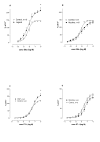
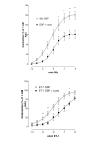
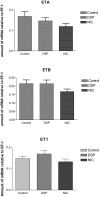
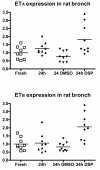
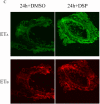
References
-
- Sekhon HS, Wright JL, Churg A. Cigarette smoke causes rapid cell proliferation in small airways and associated pulmonary arteries. Am J Physiol. 1994;267:L557–63. - PubMed
Publication types
MeSH terms
Substances
LinkOut - more resources
Full Text Sources
Miscellaneous

